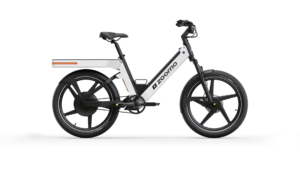By Joey Skavroneck, Zoomo’s director – USA
I recently read a report that claimed that the number of cycling fatalities in London reduced by 40 per cent last year, despite the number of reported journeys doubling.
The explanation for this incredible figure rests on the UK Government’s considerable investment in discouraging car use, which continues to be the biggest culprit of cyclist injury and death globally. Through coordinated efforts like Ultra Low Emission Zones and congestion charges, the UK has dissuaded ordinary Brits from getting behind the wheel.
On the other side of the coin sits my home, the United States. A report into New York traffic-related deaths suggested last year was the deadliest in almost a decade, with 34 people killed on bikes, mopeds, or e-bikes. Many US cities continue to struggle to accommodate cyclists, and what’s frustrating is that city planners and local administration have a blueprint to follow, but have yet to act.
So what can we learn from London to make cycling in the Big Apple safe?

Like most cities, the biggest threat to cyclists in New York is cars. Point blank, the continued prioritization of petrol vehicles over modern, green alternatives continues to spike the number of unnecessary cycling fatalities.
In all but two of the 97 incidents in 2019 where a cyclist or a pedestrian was killed, a motor vehicle was also involved, with the majority of incidents a result of driver inattention or drivers failing to yield.
Just this month, we saw new policies arrive in the form of the Inflation Reduction Act. And whilst the Climate Act is an important and long overdue climate bill, what the bill failed to appropriately address was initiatives to subsidize and encourage the uptake of electric bikes and LEV’s. Instead, when it came to transport, the bill’s focus centred largely on electric vehicles in the form of cars, underscoring an American reliance on bulky vehicles to get from point A to point B.
London, on the other hand, has seen its share of car journeys plateau in recent years. London has had congestion charges in place for almost 15 years, with additional measures including the Ultra Low Emission Zones highlighting a conscious and organised effort to make traditional driving expensive and harder to rationalize.
This is not to say we aren’t seeing some progress. There are encouraging signs, the proposed new congestion pricing in Manhattan will help, but this must be a first step of many towards creating a safer environment for cyclists, as well as pedestrians and other drivers.
This is not an overnight fix, and we may never hit the status of an Amsterdam or Oslo, however we don’t have to. What we need is meaningful policy and infrastructure to oversee a national reduction in cycling fatalities, enforcing bolder legislation against cars and subsidizing the use of alternative, safer vehicles.
Read more: Bristol e-bike operator forced to halt service due to vandalism
One cyclist injury is one too many. Let’s put safer and more environmentally friendly solutions at the forefront of urban planning. Other cities, like London, are doing it quicker than New York, and it’s time we followed suit.
 micromobilitybiz Delivering news updates to the micromobility industry, focusing on e-bikes, e-scooters and green transport
micromobilitybiz Delivering news updates to the micromobility industry, focusing on e-bikes, e-scooters and green transport




